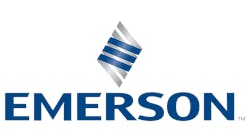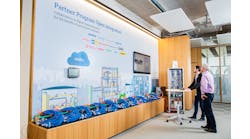There are many evolving industrial information models based on national, international, and industrial interoperability standards. The object models and XML schemas based on these standards are generally freely available and applied widely; however, there is currently no compliance certification agency verifying vendor software or end users specifications and applications as compliant with the definitions. With the help of many others, I am currently forming the Industrial Interoperability Compliance Institute (IICI) to provide certification services to fill this large market need. The IICI is part of the Automation Standards Compliance Institute (ASCI), a not-for-profit company affiliated with ISA. Late in 2007, we formed a 12-company Technical Advisory Board with input from the OPC Foundation and the WBF to produce a business plan and membership prospectus, which was released at the WBF Conference in March of this year. Since that time, we have been signing up founding members who understand the rewards and risks.
I am not kidding myself or anyone that getting such an organization off the ground will be easy. It will require real market and cultural change in the form of vendors, integrators, end users and government working together to grow the global economy through configurable adaptive manufacturing.
The IICI is a developing industry consortium that establishes an ISA interoperability designation to identify and promote interoperability standards and compliant products and systems. The IICI vision ensures interoperability between enterprise, supply chain and plant operations systems. The IICI members and contributors believe industrial interoperability standards allow manufacturers to build Lean operations IT systems through common definitions of data and processes.
It must be understood that information models, processes and their associated transaction are not 100% interoperable cross-plant and plant-to-enterprise. Even a 50% to 70% match enables a very high degree of adaptability and throughput.
To accelerate membership growth, the ASCI has retained WBF experts to develop the first IICI productthe Business to Manufacturing Markup Language (B2MML) Compliance Program. The B2MML Compliance Program will be released in 2009 and will cover the integration of business and manufacturing systems, following the ISA95 data exchange and transaction definitions using the WBFs B2MML Data Exchange Schema standard.
The B2MML and the other evolving MOM standards are the foundation for Lean operations IT systems because they establish common standard work definitions of data, operations processes and associated transaction across all plants. I believe that only through the use of such definitions can companies create the adaptive interoperability needed to support configurable manufacturing operations and their necessary configurable business processes, interfaces, reports and metrics. Twenty-first century global markets require this manufacturing form to be successful.
I have talked to over 150 end user, vendor and system integrator companies. Many of them are among the top 100 global manufacturers. Yet some simply do not understand that they are paying unnecessarily large amounts of money for custom interfaces and reports and dissimilar, disparate systems.
Some management teams tell me that they view the IICI as a vendor-driven organization. Their belief that compliance is just a vendor task is frankly wrong and works against their own business interests. Without a standards-based information model containing transactions to represent their standard business processes, their businesses have to create and maintain custom, monolithic transaction models to interface with their suppliers, customers and plants across their ever-expanding supply chains. End-user companies are simply not allowing their manufacturing and supply chain systems to strategically enable their business to be adaptive and configurable to market change. Consequently, their competiveness and profit are directly affected.
The current approach to integrated systems seriously constrains business and does not enable Lean practices or global market growth. Current business models do not flex to change rapidly enough to provide the market advantage required or desired.
The compliance favored by IICI is not a vendor task. In fact, it is quite the opposite. In doing over $25 million in MOM systems worldwide, I have witnessed that the highest life-cycle cost for integrated manufacturing systems is the custom interfaces, reports and analytics. For manufacturers IT costs to go down and their competitive market response to increase, they must be leaders in this IICI effort.
As companies transform their linear, primarily continental supply chains to globally distributed supply networks and exchanges, they see that their IT infrastructure must change. Designing these new systems based on standards-based, service-oriented architectures (SOA) begins by designing the business process for the current and evolving markets in a business process management (BPM) system. Then design systems and interfaces to support end-to-end business processes, not department-focused systems based on individual information models.
We have been developing manufacturing operations standards for over 15 years, but with little cross-industry and no government coordination. We ALL need coordination to move forward the global economy forward. Manufacturing companies led by government organizations such as the National Institute of Standards and Technology (NIST) need to map out the standard business and operations processes and the associated transactions that use the OPEN Operations and Maintenance Standards (ISA88, ISA95, ISA99, OPC, MIMOSA, OMAC and OAGIS) as the single information model for data definition and hierarchy. The current available solutions simply cost too much for the 250,000 North American small manufacturers below $500 MM in size.These companies survival in the global market depend on driving towards a common manufacturing language.
For ISO definitions of integration and interoperability and more on ICII, go to www.controlglobal.com/ICII.html.




